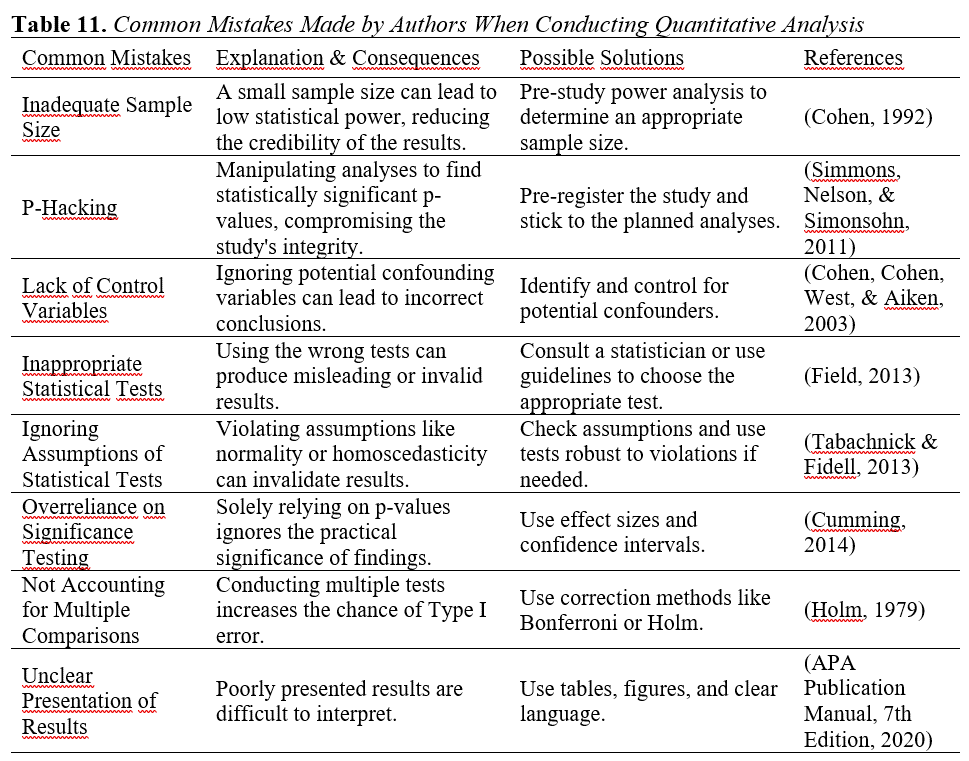Analyzing quantitative data involves statistical methods to interpret the data collected from the research instruments (Field, 2013). Descriptive and inferential statistics could be employed to understand the distribution and impact of obstacles in academic publishing. The Table 9 outlines the common mistakes made by authors when conducting quantitative analysis:

Table 11 describes common mistakes made during quantitative research and their causes, consequences, and possible solutions. Examples of these errors include insufficient sample size, p-hacking, lack of control variables, inappropriate statistical tests, ignoring the assumptions of statistical tests, over-reliance on significance tests, ignoring multiple comparisons, and unclear presentation of results. For example, insufficient sample size can result in low statistical power and reduce the credibility of the results. To resolve this situation, a sample size analysis can be performed beforehand. Manipulating p-values may compromise the integrity of the study, so the study may need to be registered in advance and adhere to planned analyses.


